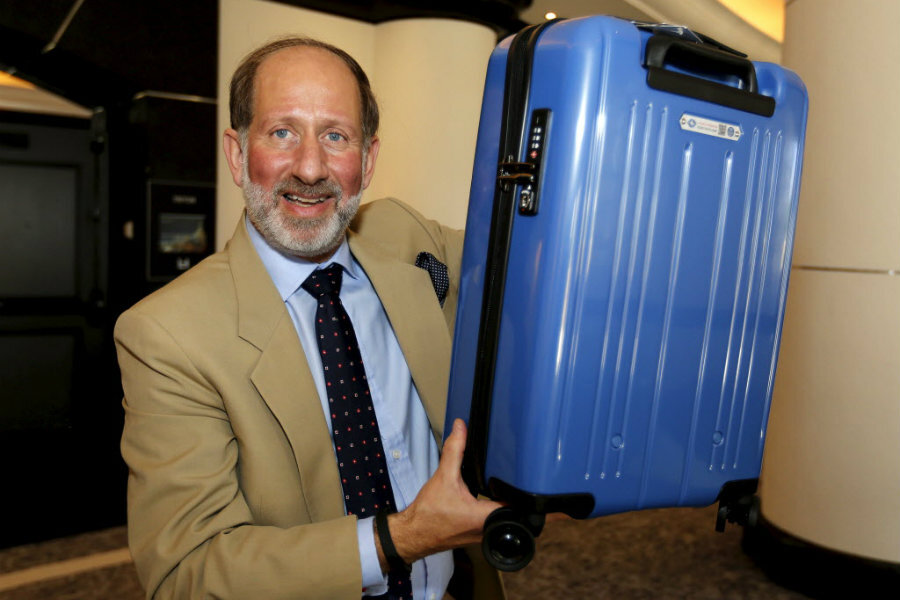Airlines welcome new carry-on limits. Is smaller better?
Loading...
Millions of fliers may have to invest in smaller, sleeker travel bags, if an airline industry recommendation comes to pass.
The International Air Transport Association (IATA) on Tuesday announced a new luggage guideline as part of an initiative to improve the accommodation of carry-on bags across airlines worldwide. The proposal, which IATA said met with support from the world’s top carriers, would cut the permitted bag size by about 21 percent — a policy that critics said would add to already growing traveler discomfort and expenses as airlines strive to cut costs.
The new rule, which proposes that bags be at most 21.5 inches tall, 13.5 inches wide, and 7.5 inches deep, would make the best use of cabin storage space as well as streamline the passenger boarding process, according to IATA. Different airlines currently have varying limits for carry-on bag sizes, though almost all of those limits are more generous than those IATA proposed.
With the suggested size, the association said, there would theoretically be enough room for one carry-on bag for every passenger in a 120-seat aircraft.
“The development of an agreed optimal cabin bag size will bring common sense and order to the problem of differing sizes for carry-on bags,” Tom Windmuller, IATA’s senior vice president for airport, passenger, cargo, and security, said in a statement.
“We know the current situation can be frustrating for passengers. This work will help to iron out inconsistencies and lead to an improved passenger experience,” he added.
IATA’s proposal, revealed at a conference of global airline CEOs in Miami, comes as commercial carriers continue to implement cost-saving, profit-boosting measures in the face of what journalist Shelley DuBois called, in 2012, a litany of woes: “high labor costs, volatile fuel prices, thorny legislation, not to mention trying to sell a highly commoditized product to customers that love to hate them,” she wrote for Fortune.
Over the last decade, the industry saw a series of mergers among top carriers, including Southwest Airlines and AirTran, Air France and KLM, and most recently, US Airways and American Airlines. Today, only four major carriers are behind the bulk of US commercial aviation.
At the same time, airlines slimmed plane seats to make room for more passengers, reversing half a century of seat growth in economy class, The Wall Street Journal reported. They also started charging for services such as checked bags, in-flight dining, seat selection, early boarding, and reservation cancellation.
To some, IATA’s proposed baggage rule is just an extension of those cost-cutting efforts, and a burden to travelers. The lack of overhead cabin space is because airlines have crammed too many seats on planes and charge passengers to check their suitcases, travel industry consultant Henry Harteveldt told the Associated Press.
“Once again, the airlines find a way to make their problem the passenger’s problem — and an expensive problem at that,” he said.
At least eight major airlines have said they support the new guideline: Avianca, Azul, Cathay Pacific, China Southern, Emirates, Lufthansa, and Qatar. The association expects more airlines to come on board, though no US carriers have announced plans to change their carry-on limits, IATA spokesman Chris Goater told The Washington Post.
The guideline is strictly voluntary for airlines, Mr. Goater added.
IATA and some airlines are already working with luggage manufacturers such as Samsonite, Delsey, and Tumi to develop bags in line with the proposed dimensions and labeled with an “IATA Cabin OK” logo.








